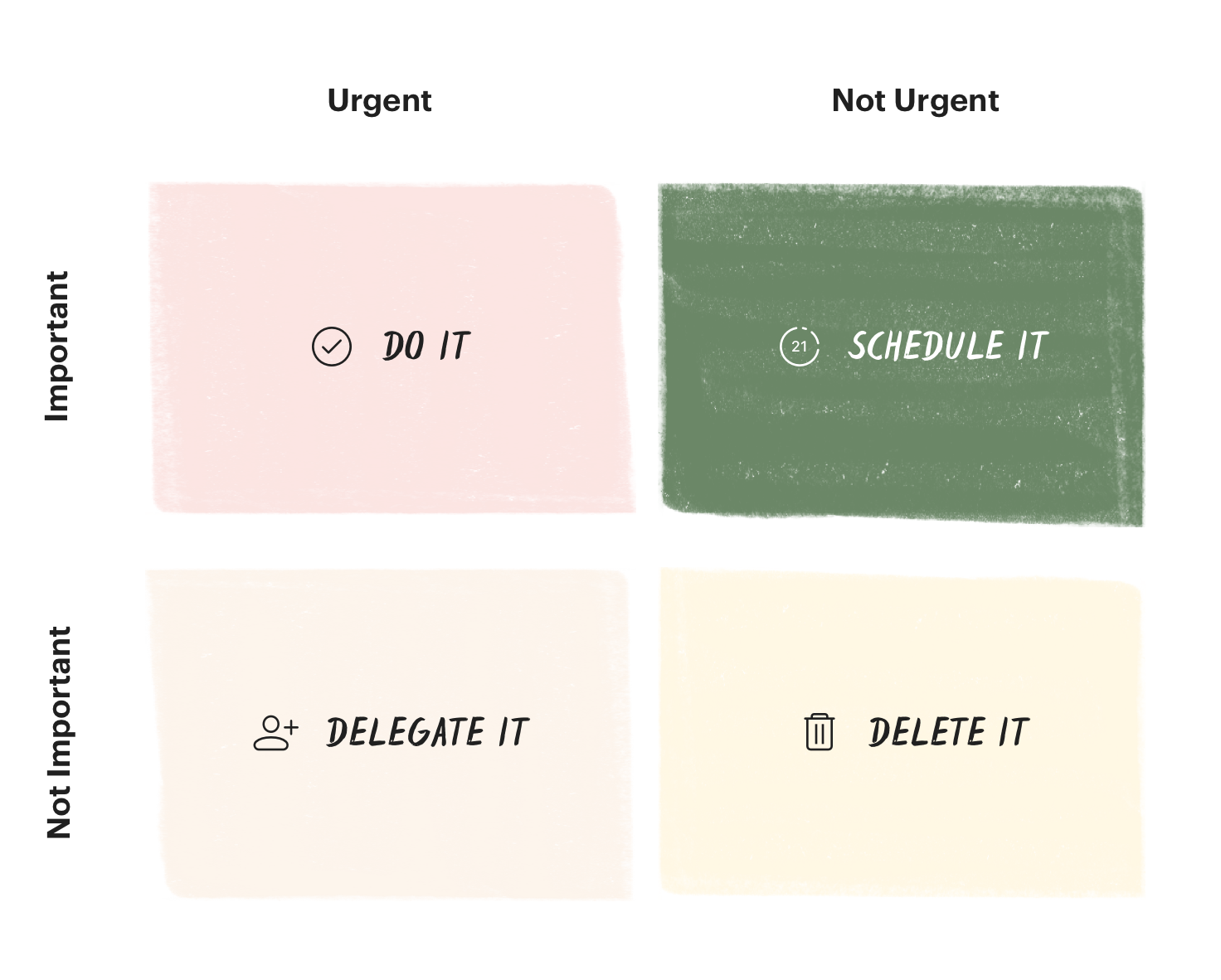Prioritizing your PM time - the Eisenhower matrix method
24 Oct 2020I learned of this matrix’s existence quite late in life. However, learning it has changed my life with respect to time management. It’s quite simple really, you bucket all your todos into 4 quadrants,

Here’s my PM breakdown of this activity
Important and Urgent: Stuff that only you can do and that needs your highest attention. E.g., writing a PRD, communicating updates, making a product decision, addressing a customer / product issue etc.
Important and non-urgent: e.g., getting back on low priority bugs, sending out a status update, writing copy for a help page etc.
The next two sections were the ultimate game changers, in my opinion. I’d never really had the privilege of sitting down and thinking about what I could actually delegate. And more importantly, what could I delete; What job can you actually not do?
Urgent and non-important: It’s in the name itself. If it’s urgent, but not important to you, that means it’s someone else’s job. Which you’re trying to do, probably terribly. In my experience, some of these tasks are things like making high fidelity mocks, writing copy when there’s an entire copy department set up to help, or not relying enough on the marketing department.
Here was a non-obvious one for me: I launched a new API for a platform I was managing, and I wanted to write a blog post announcing it. I knew from my developer days that Developer evangelists is who I used to get my news and tips from. I reached out, explained my situation, and the team took it on. They did an A+ job writing up code samples, talking about customers who had requested it, published it in their newsletters, social feeds, etc. I like to think of this process as finding a better person to do the job.
Not important and not urgent: This is unique to each person. I cannot and will not tell you what part of your job is not important and not urgent. Some examples in my experience: deleting old irrelevant bugs, receiving customer feedback that you’re already aware of etc.
References
- Image courtesy todoist app blog: The Eisenhower Matrix